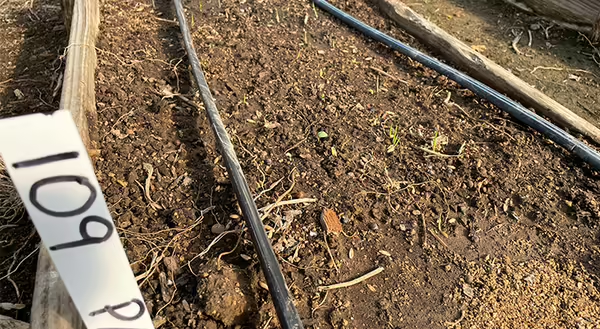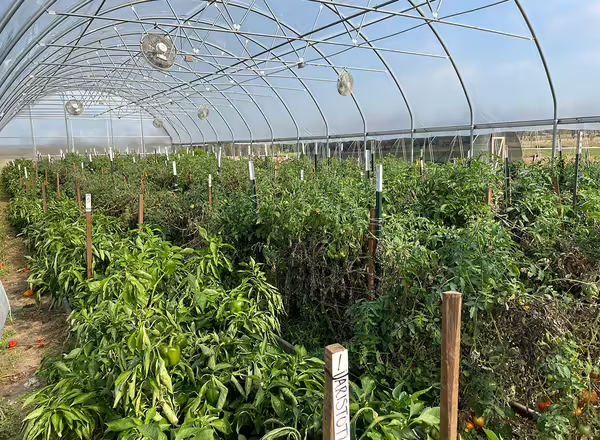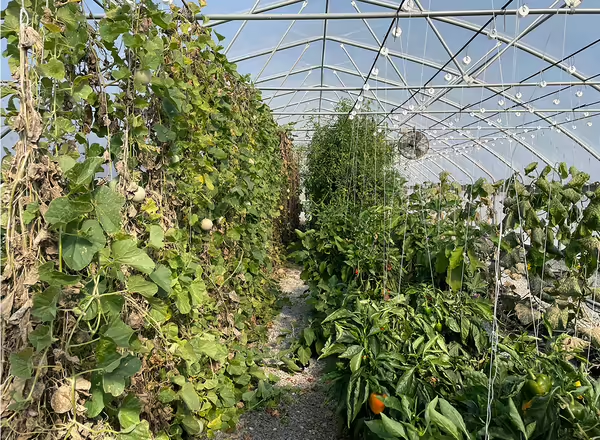
The two-year specialty crop block grant, “Strategies for Improving Biological Control of Insect Pests for Vegetable Growers Utilizing High Tunnels” officially finished data collection in September. During the month of October, tomato, pepper and cut flower plants, stakes, posts, and string have been removed from the treatment tunnel. The soil in the raised beds has been tilled in preparation for broadcast seeding cover crops. Cover crops were seeded on October 22, with a light raking to incorporate, and watered in. The rows have been overhead watered daily with the shower setting on the spray nozzle of the garden hose. Once most of the seeds have germinated and the rows have begun to fill in, watering will be switched to drip irrigation. The photo shows Austrian winter pea and spring oats beginning to germinate 7 days after broadcast seeding.

For this coming year, four different cover crop mixes have been established in replicated plots with plans of looking at two different termination methods next spring, solarization and mechanical. Timing of termination will depend on the method as well as the planting date (first week of April) for the tomato and pepper cash crops. The cover crop mixes being evaluated are Austrian winter peas/annual ryegrass, Austrian winter peas/spring oats, crimson clover/annual ryegrass, and crimson clover/spring oats. Crimson clover and spring oats have been used the past two seasons, but Austrian winter pea and annual ryegrass will be new this year. Insect populations will be observed and compared to those in the other high tunnel that will not be planted with cover crops.

Tomato and pepper plants have not been removed from the control tunnel. The plants were not damaged from the two cold, frosty mornings during the week of October 14. While most of the tomato plants are full of dead, brown leaves that have succumbed to leaf mold, the top part of the plants has a flush of green leaves and fruit. Fruit size on the tomatoes has been small since the first of September but pepper fruit has maintained size, firmness and quality.

The hydroponic crops have responded to the cooler temperatures in October, compared to the temps of August and September. The specialty cantaloupes started setting fruit again, the tomatoes and peppers are happier, and the strawberry fruit numbers have increased. The tips of the cucumber plants did get nipped by the frosty nights, providing a good example of how sensitive they are to cold temperatures.
As a reminder to growers with perennial crops, read through Trent Ford’s weather update in this issue and consider your irrigation options. Prolonged drought conditions in the fall can reduce yields the following season through decreased fruit bud development, reduced root system development, decreased vigor in current primocanes/future floricanes, and reduced nutrient uptake depending on the crop. Blueberries and strawberries have very shallow root systems and plant mortality could be a concern.